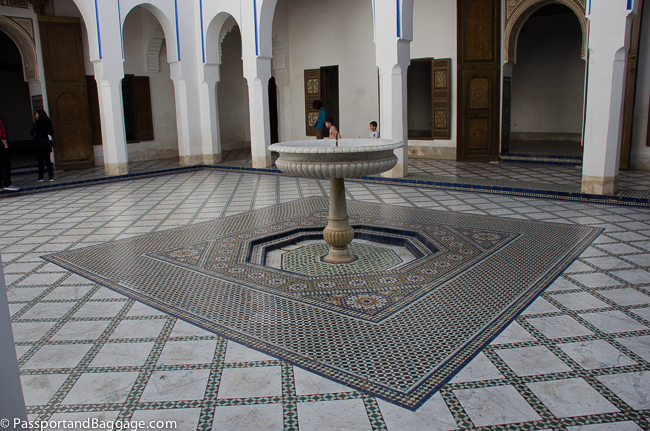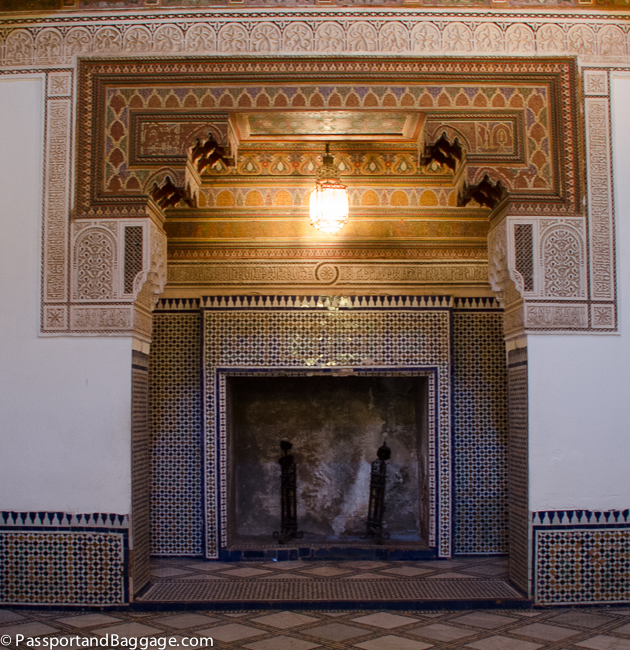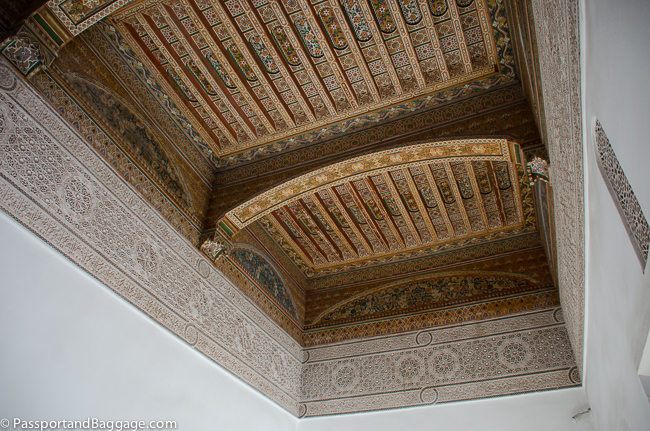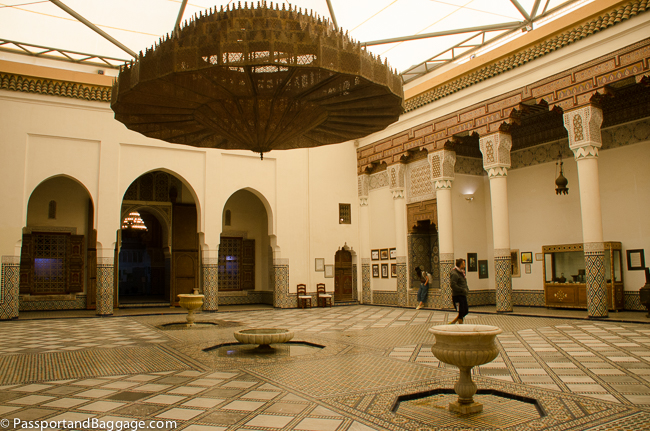
Dar Si Said Palace with its spectacular chandelier in the center courtyard
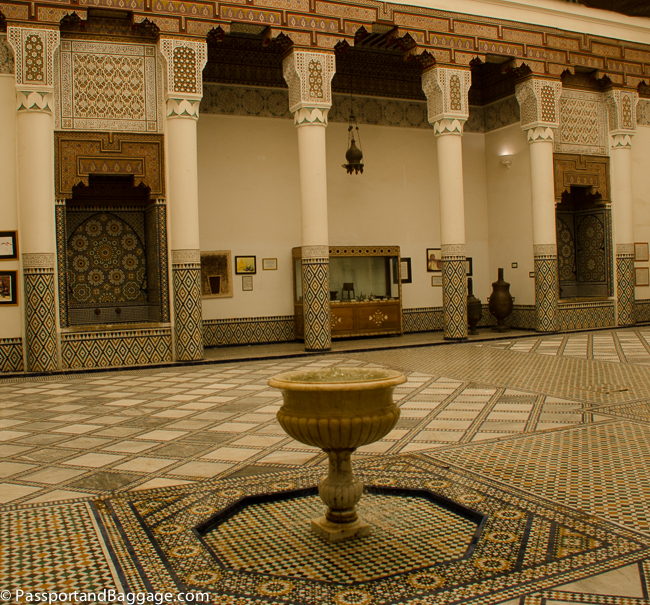
Another view of the central courtyard of Dar Si Said
Dar Si Said now serves as the Museum of Moroccan Arts. It was formerly the house of the brother of Bou-Ahmed, Sisi Said.
Dar Al BachaBuilt in 1910, the Dar el Bacha, which means “house of the pasha”, was the residence of Thami El Glaoui, who was given the title of pacha of Marrakech by the Sultan Moulay Youssef in 1912. Some of its more famous guests were Charlie Chaplin, Josephine Baker, and Winston Churchill. The palace was renovated by the Fondation Nationale des musées (FNM) of Morocco.
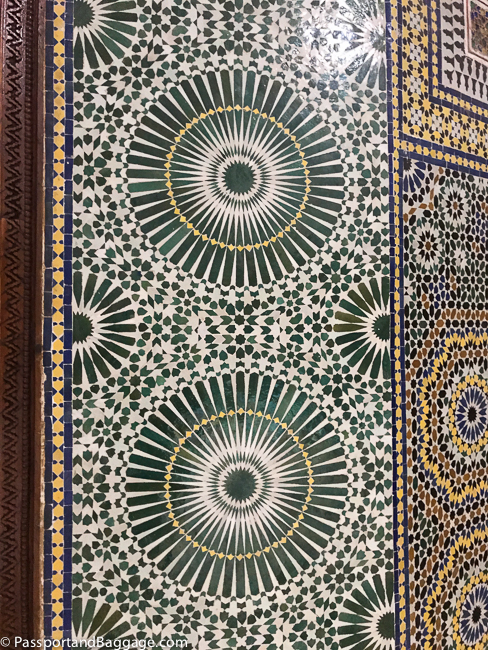
The tile at Dar Al Bacha is some of the finest I have seen
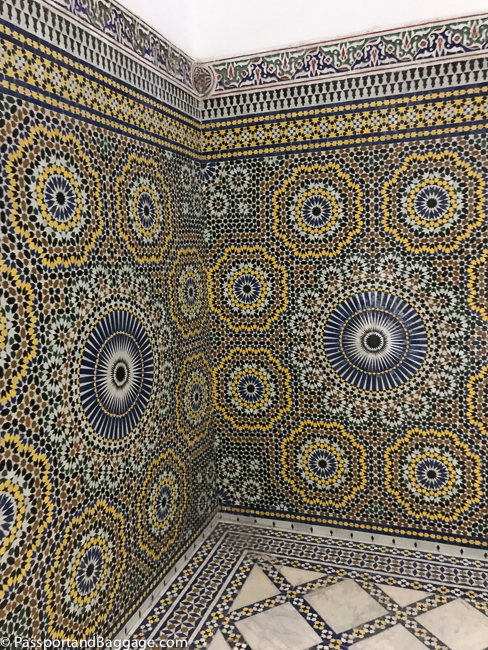 Dar el Bacha is a prime example of Moorish architecture, with fountains and orange trees in the central courtyard, traditional seating areas, and a hammam. Features that have been restored, include the carved and painted cedar wood doors, black and white checkered marble floors, ceilings covered in colorful zellige mosaics and columns painted with natural pigments such as indigo, saffron, and poppy.
Dar el Bacha is a prime example of Moorish architecture, with fountains and orange trees in the central courtyard, traditional seating areas, and a hammam. Features that have been restored, include the carved and painted cedar wood doors, black and white checkered marble floors, ceilings covered in colorful zellige mosaics and columns painted with natural pigments such as indigo, saffron, and poppy.
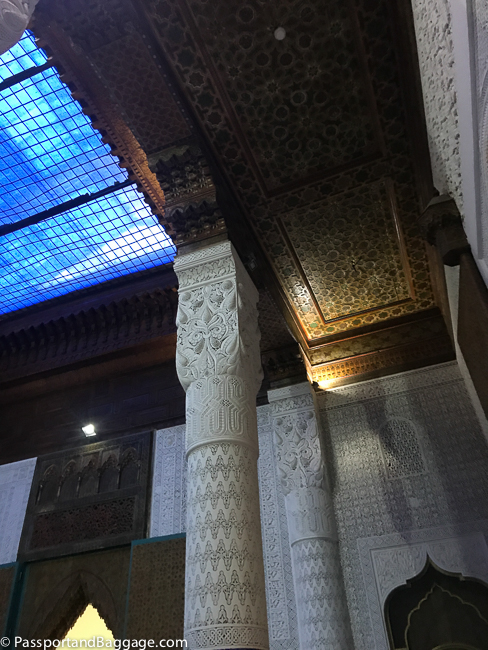
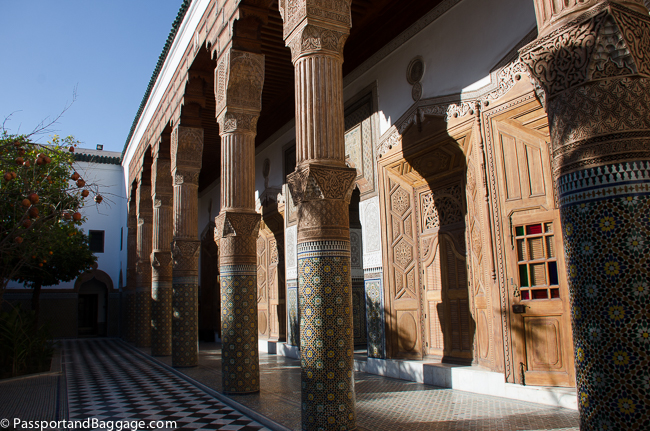
The Mellah
Mellahs are an important part of the history of the larger Moroccan cities, and their Jewish cemeteries are always worth a visit.
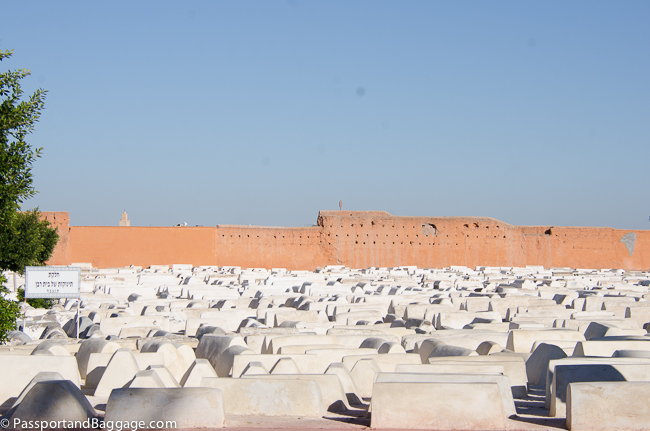
The cemetery in Marrakesh, Miaara, is the largest in the country. It was established in 1537 and is still a working cemetery today. The Miaara cemetery is part of the Kings program to help restore the Jewish cemeteries of Morocco.
Religious Buildings
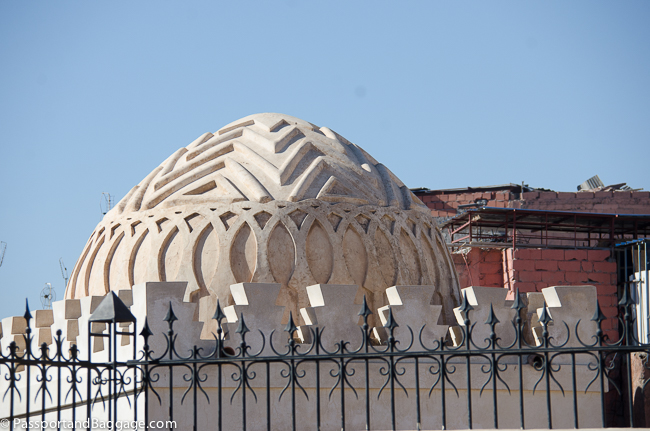
The Ben Youssef Madrasa is an Islamic college named after the Almoravid sultan Ali ibn Yusuf (reigned 1106–1142). It is the largest Madrasa in Morocco. The building of the madrasa was re-constructed by the Saadian Sultan Abdallah al-Ghalib (1557–1574). The building was closed down in 1960, refurbished and reopened to the public as a historical site in 1982. It is closed again for renovation, surrounded by high walls the dome is as close as one can get at this time.
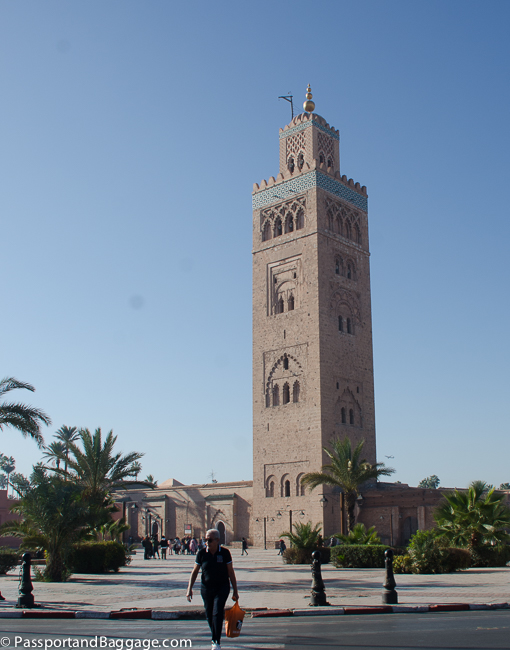
The Koutoubia Mosque
The Koutoubia Mosque is the largest mosque in Marrakech. Decorated with curved windows, a ceramic strip, pointed merlons, and decorative arches; it is also surrounded by gardens. Completed during the reign of the Berber Almohad Caliph Yaqub al-Mansour (1184-1199), it inspired other buildings such as the Giralda in Seville and the Hassan Tower in Rabat.
Tombs
The Saadian tombs date to the time of the Saadian dynasty sultan Ahmad al-Mansur (1578–1603). Abandoned for centuries, the tombs were rediscovered in 1917 by aerial photography and were then renovated. They have recently undergone another thorough renovation. For a real feel of what these buildings are like on the interior, view this post on the tombs in Tunisia that are presently undergoing restoration.
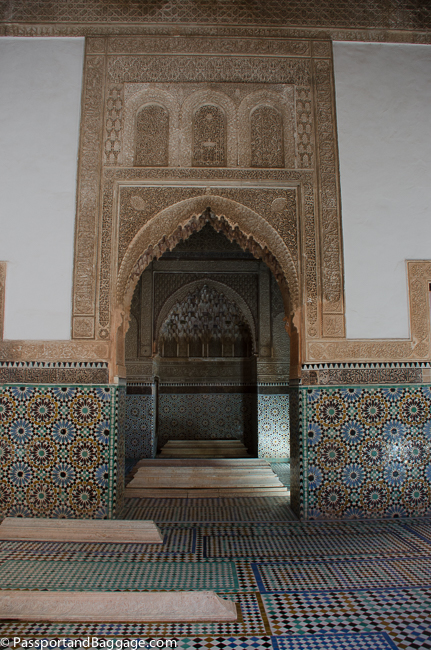
Saadi Tombs

Carrera marble columns of the Saadi Tombs
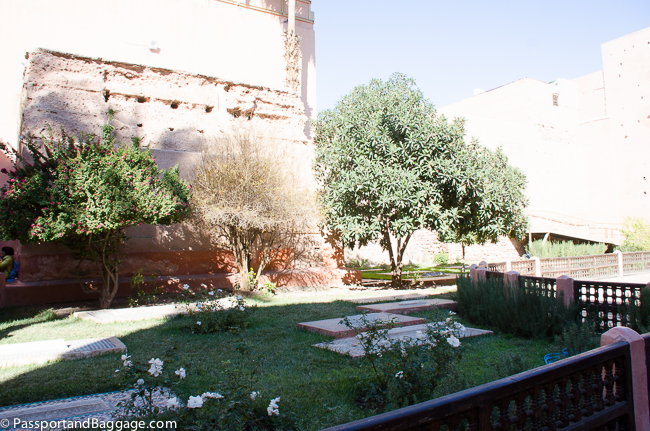
In the garden are the graves of soldiers and servants.
Shopping
The Marrakech Madina has turned into a Disneyland type shopping mecca for tourists. The shops, unlike all the other Medinas, are huge, the streets are wide with constantly zipping motorcycles and Vespas, and the grifters seemed to be more prevalent. The same things are sold all over the country, however, here they are simply more expensive.
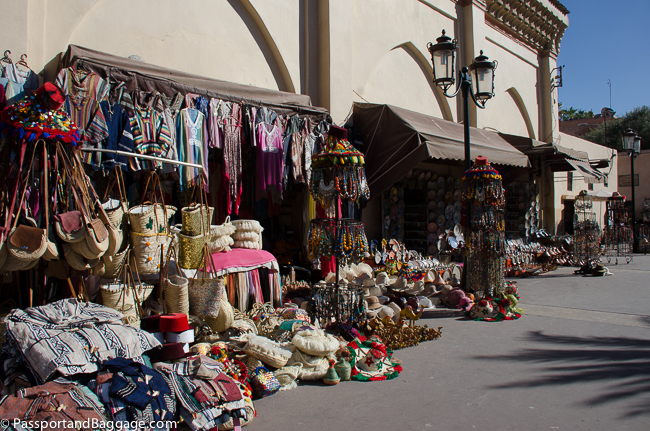
*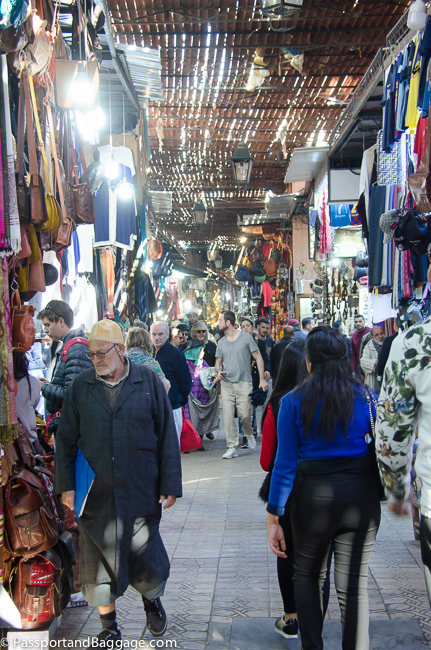
A sure sign there are more tourists than locals is when the ATM has a waiting line.
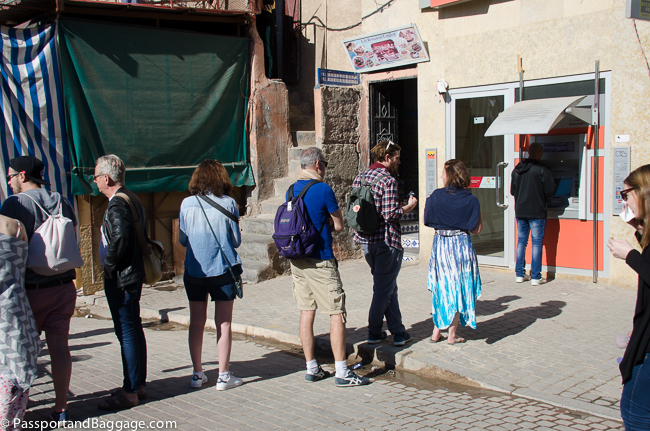
*
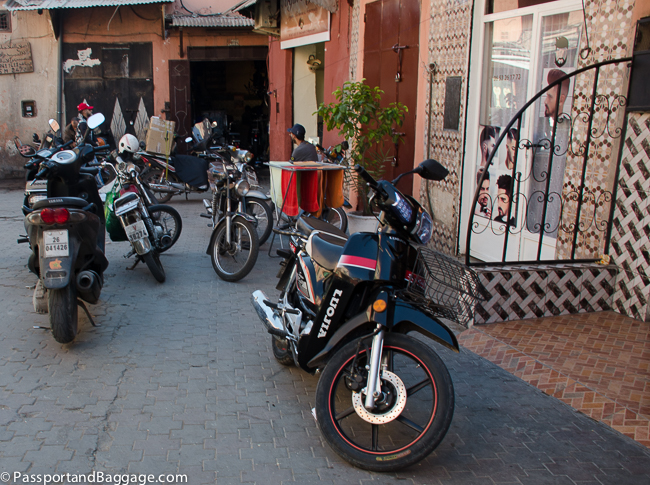
Motorcycles rule the pathways of the Medina in Marrakech
